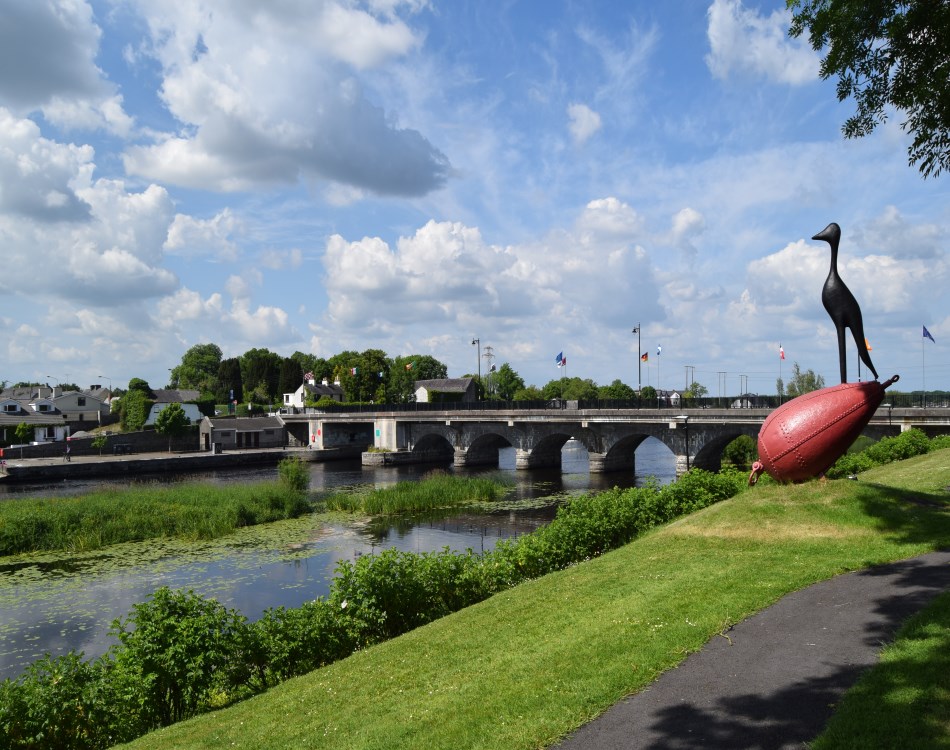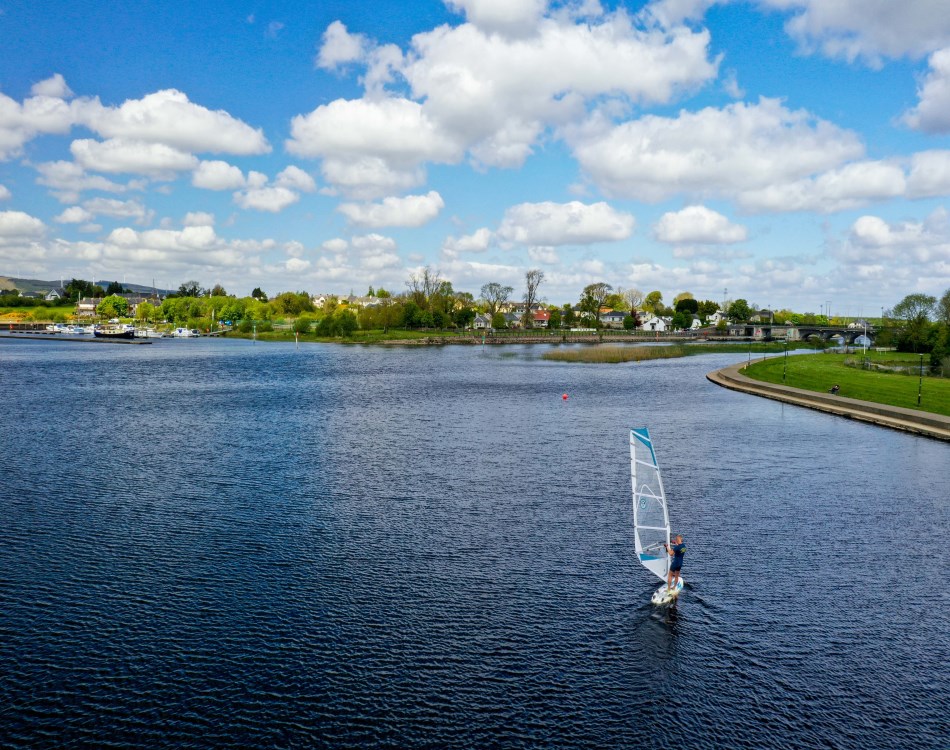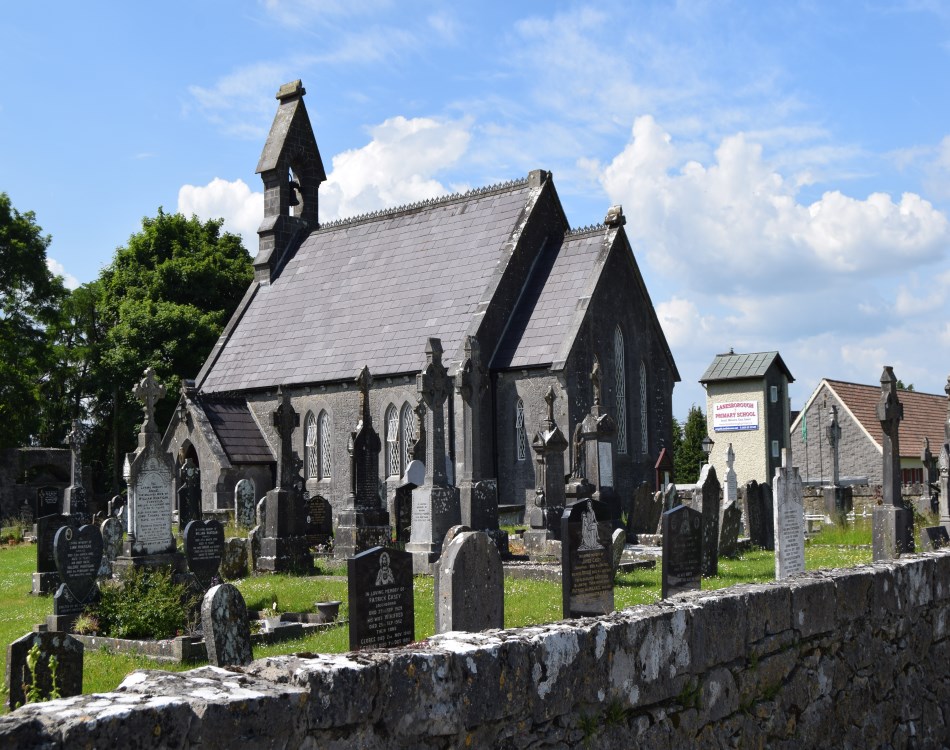Lanesborough

Welcome to Lanesborough
Lanesborough has always been noted for its trade and commerce. It has always been described, past and present, as "a prettily situated town on the banks of the lordly Shannon".
Things to do & see in Lanesborough
The Commons
The Commons is a rich ecological area south of Lanesborough. It contains an area of mixed woodland, limestone quarry, reed bed systems grading into freshwater marsh and dense species of rich scrub/verge grassland. An example of limestone pavement present here is rarely seen outside Co. Clare. The limestone pavement has numerous vegetated grykes and bryophytes.
The dominant species of the woodlands are hazel, ash, willow, alder, and some oaks. The woodland/scrub and grassy verges have bent grass, fescue, cocksfoot, bramble and some bracken. Common reed, bull rush, water lily and water plantain can be found in the reed beds. In the fresh water marsh, yellow flag, meadow sweet, reed grass, soft rush and bottle sedge are some of the specimens that can be found. There is also a lovely walk, Commons Woodland Trail and a playground in the vicinity for visitors to enjoy.
Lough Ree Distillery
Lanesborough is home to Lough Ree Distillery, the award winning gin and whiskey company. Call in to their shop and purchase a bottle as a treat or a gift. Or have a coffee at their Distillery Yard coffee dock adjacent to the playground and watch the world go by.
Lough Ree
Lanesborough is situated on the River Shannon at the northern end of Lough Ree. The town derives its name from the Lane family. George lane took part in the Battle of Kinsale (1601) and was rewarded with large tracts of land in this area. Lanesboro is linked by a bridge to its sister village Ballyleague in County Roscommon. The first bridge of wattles was replaced by a stone bridge in 1706. A new bridge was built in 1847 and updated in 1970.
Lough Ree offers a wide variety of amenities, historical and tourist attractions. The lake is of special interest for its island. Inchcleraun contains the ruins of seven churches, which were part of a monastic settlement founded by St Diarmuid in 6th century.
Boating and Water Sports
Lough Ree’s wide expanse of water is ideal for boating. Water skiing, kayaking, rowing and windsurfing are also carried out on the lake. For kayaking please contact Junior Pat Hannon Kayak. Boat trips available from Lough Ree Access for All. Or planning on staying longer? Rent a cruiser from Cruiser Boats Ireland who are moored in the marina.

Windsurfing in Lanesborough, photo by Shuttermaniac Photography
Lanesborough Fishing
Lanesborough is renowned for its excellent fishing. The ‘Hot Water Stretch’ is famous for bream, tench, roach, pike, perch and eels. The bank between the power station and bridge has been revamped to facilitate the fisherman. Visit the local tackle shops for all your angling requirements. Further information on local fishing is contained in the very usefully booklet produced by Lough Ree Angling Hub which is available in shops. A.M. Pike Guiding also provide guiding fishing tours in the surrounding waters.
Lanesborough is renowned for its excellent fishing. The Hot Water Stretch adjacent to the peat-fuelled power station has attracted fishermen from all over Europe. The riverbank has been completely revamped and now has 60 stands at the bridge, with 4 stands for the disabled.
Beam roach, hybrids, tench, perch and guideon are the main species of fish caught here. Boats can be hired locally.
St John’s Church of Ireland

There has been a church on the site since the 5th century. In the town of Lanesborough stands one of the oldest centres of Christianity in Longford. St. Johns Church stands on the site of the original church founded in the fifth century. This early Christian church was part of a small monastic settlement whose chief centre was on Saints Island on Lough Ree. Frequently raided and despoiled by Viking invaders, the church was left largely in ruins throughout the medieval period. It was only in the early 17th century when George Lane was created the first Viscount of Lanesborough that an almost completely new church was constructed. Further repairs were conducted in 1740 and more recently in 1861 when the church took the form in which it still stands today. The present building dates from 1861. The Church is open to the public with an account of its history on display.
Lanesborough History
Lanesborough derived that name from the family of Lane, The town derived its name from Sir George Lane, whose lands of Ballyleague and others in the County of Longford were created into the manor of Lanesborough by a charter of Charles II. It was previously known as Viscount. This title became extinct in 1727. The ancient name of the town is Athleague, or Baile-Atha-League, and across the river Shannon on the Roscommon side is Ballyleague. The ford, which connects Longford and Roscommon gave the place its name. It was of considerable strategic importance in the many wars between the Irish and the English. At the northern tip of the broad expanse of Lough Ree stands Lanesborough, named for the family of one of the English heroes of the Battle of Kinsale (fought in County Cork in 1601) who was given lands here as a reward for his loyal services. Here, the province of Leinster reaches its western-most limits as the River Shannon separates it from Connaught. The town actually straddles the river and the provinces, spilling over onto the Roscommon side of the Shannon.
Lanesborough's strategic location has long been recognised. In 1140 Turlough O'Connor, King of Connaught, marched his armies through the fords here. Less than a century later the Norman Lord, Walter deLacy, fortified the river crossing. The remains of his castle can still be seen, its towering ivy-clad bulk still mocking the passing years. It is its strategic location on the Shannon, which is still the basis for much of Lanesboroughs activities.
A well stocked library in the town provides valuable navigation material on the Shannon and explores the wealth of history and the proud heritage of the region. North of the town, just off the L121 is Cloontuskert Abbey, founded by Saints Brendan and Faithleach in 520 AD.



